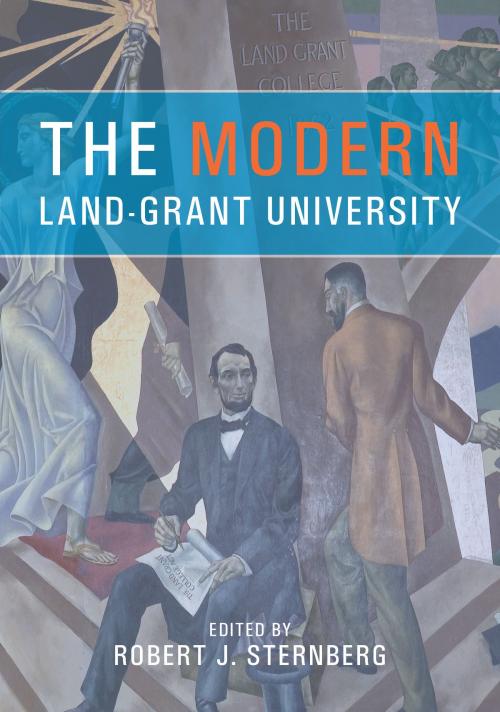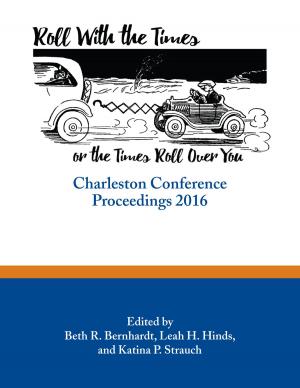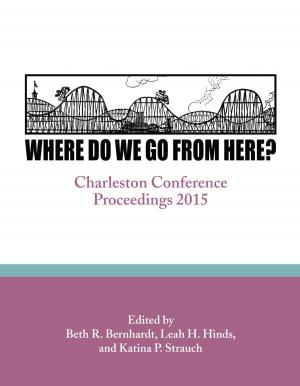The Modern Land-Grant University
Nonfiction, Reference & Language, Education & Teaching, Educational Theory, Philosophy & Social Aspects, Administration| Author: | Robert J. Sternberg | ISBN: | 9781612493367 |
| Publisher: | Purdue University Press | Publication: | November 15, 2014 |
| Imprint: | Purdue University Press | Language: | English |
| Author: | Robert J. Sternberg |
| ISBN: | 9781612493367 |
| Publisher: | Purdue University Press |
| Publication: | November 15, 2014 |
| Imprint: | Purdue University Press |
| Language: | English |
In an increasingly competitive higher education environment, Americas public universities are seeking ways to differentiate themselves. This book suggests that a hopeful vision of what a university should be lies in a reexamination of the land-grant mission, the common system of values originally set forth in the Morrill Land Grant Acts of 1862 and 1890, which established a new system of practically oriented higher learning across the United States. While hard to define, these values are often expressed by the one hundred or so institutions that currently define themselves as land grants under the three pillars of research, teaching, and engagement/extension.
In order to understand the unique character of a modern land-grant institution, this book focuses especially but not exclusively on the multiple components of a single organization, Oklahoma State University, founded in 1890 and currently enrolling 35,000 students across five campuses. Contributors from across the university focus on what the land-grant mission means to them in their daily endeavors, whether that be crafting the undergraduate academic experience, stimulating research, or engaging with the community through extension activities. The twenty contributions are divided into four parts, exploring in turn the core mission of the modern land-grant university, the university environment, the universitys public value, and its accountability. The volume ends with an epilogue by the editor, which summarizes the values underlying the activities of land-grant institutions.
In a time of uncertainty in higher education, this volume provides a helpful overview of the many different types of value public universities bring to American society. It also offers a powerful vision of a future founded on land-grant ideas that will be inspiring to university administrators and trustees, other educational policymakers, and faculty and staff, especially those fortunate enough to be part of land-grant institutions.
In an increasingly competitive higher education environment, Americas public universities are seeking ways to differentiate themselves. This book suggests that a hopeful vision of what a university should be lies in a reexamination of the land-grant mission, the common system of values originally set forth in the Morrill Land Grant Acts of 1862 and 1890, which established a new system of practically oriented higher learning across the United States. While hard to define, these values are often expressed by the one hundred or so institutions that currently define themselves as land grants under the three pillars of research, teaching, and engagement/extension.
In order to understand the unique character of a modern land-grant institution, this book focuses especially but not exclusively on the multiple components of a single organization, Oklahoma State University, founded in 1890 and currently enrolling 35,000 students across five campuses. Contributors from across the university focus on what the land-grant mission means to them in their daily endeavors, whether that be crafting the undergraduate academic experience, stimulating research, or engaging with the community through extension activities. The twenty contributions are divided into four parts, exploring in turn the core mission of the modern land-grant university, the university environment, the universitys public value, and its accountability. The volume ends with an epilogue by the editor, which summarizes the values underlying the activities of land-grant institutions.
In a time of uncertainty in higher education, this volume provides a helpful overview of the many different types of value public universities bring to American society. It also offers a powerful vision of a future founded on land-grant ideas that will be inspiring to university administrators and trustees, other educational policymakers, and faculty and staff, especially those fortunate enough to be part of land-grant institutions.















